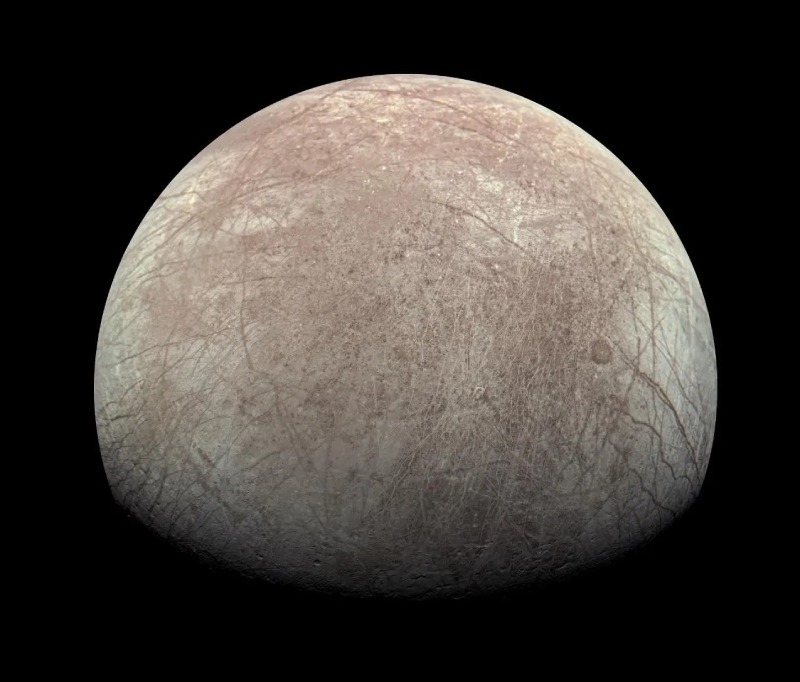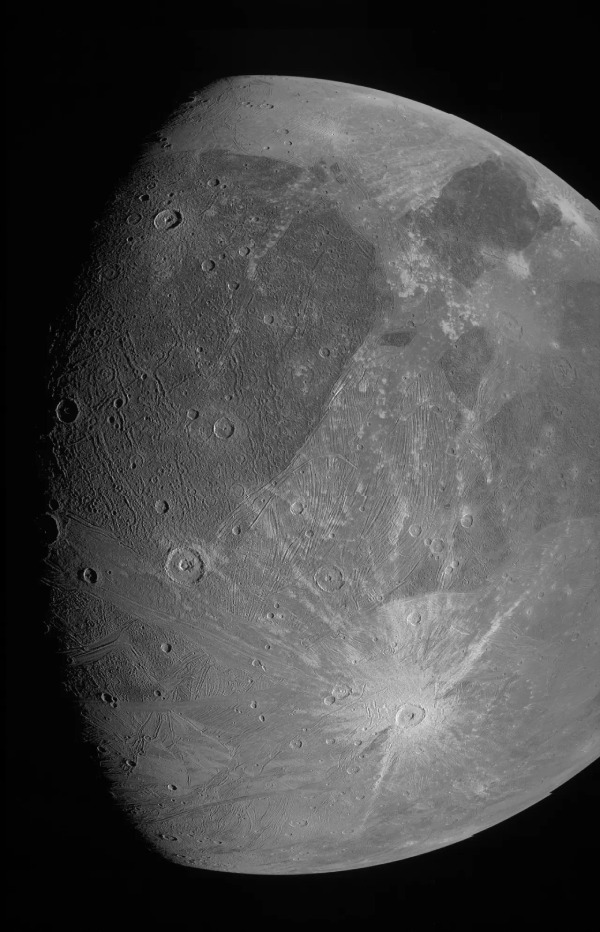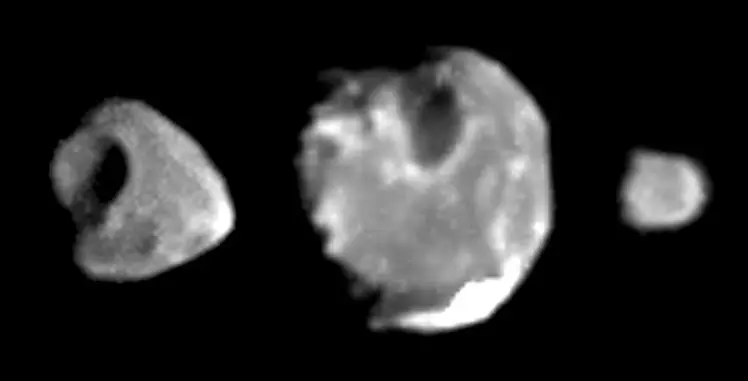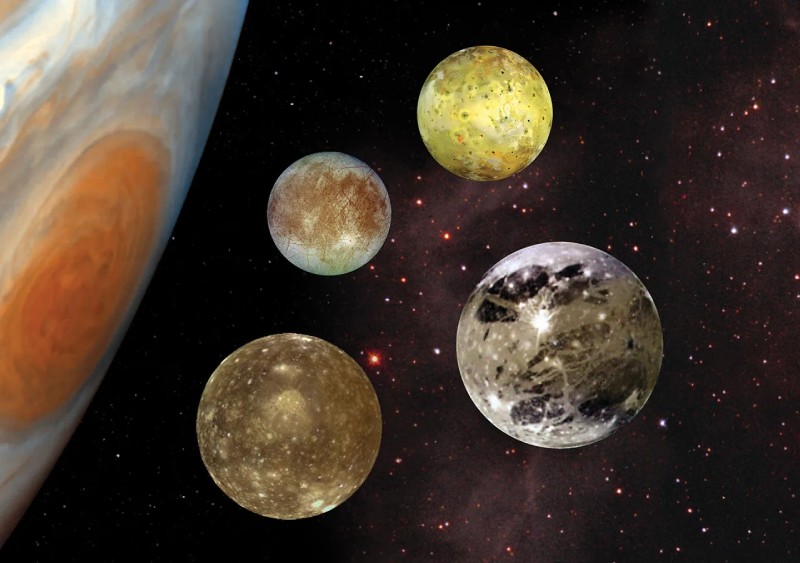Jupiter, the largest planet in our solar system, has a vast system of moons. As of 2023, Jupiter has 95 known moons, making it the planet with the largest number of moons in the solar system. Here are some of the most notable moons of Jupiter:
Io
Io is the innermost of the four largest moons of Jupiter, known as the Galilean moons. It is the most volcanically active body in the solar system. Its surface is dotted with hundreds of active volcanoes, some of which can erupt sulfur and sulfur dioxide, creating colorful landscapes of orange, yellow, and white. This intense volcanic activity is primarily driven by tidal heating, a result of the gravitational pull from Jupiter and the interactions with its other large moons, Europa and Ganymede.
Io’s surface is also covered with extensive lava plains and features like pits and mountains, all shaped by its dynamic geology. Despite its volcanic nature, Io has a thin atmosphere composed mostly of sulphur dioxide. The moon’s constant geological activity contributes to a unique environment, with its surface constantly being reshaped by eruptions and lava flows. Io is a fascinating subject of study for understanding planetary processes and the effects of tidal forces on celestial bodies.

Europa
Europa is the second Galilean moon and is of great interest to scientists due to its potential subsurface ocean of liquid water beneath its icy crust. This ocean makes Europa one of the most promising places to search for extra-terrestrial life within our solar system. The surface of Europa is characterized by features such as ridges, cracks, and dark streaks, suggesting geological activity and the potential for upwelling from the subsurface ocean.#
Europa’s thin atmosphere is primarily composed of oxygen, but it is far too thin to support human life. The moon is also subject to intense radiation from Jupiter’s magnetic field, making its environment harsh. Scientists are particularly interested in Europa as a candidate for extra-terrestrial life, and future missions, such as NASA’s Europa Clipper, aim to explore its icy surface and analyse its potential habitability further.

Ganymede
Ganymede is the largest moon in the solar system and the third Galilean moon. It is larger than the planet Mercury and is the only moon known to have its own magnetic field, likely generated by a partially liquid iron or iron-sulphide core.
The moon has a diverse surface featuring both ancient, heavily cratered regions and younger, grooved terrains. It has a diverse surface marked by two main types of terrain: bright, icy regions with grooves and ridges, and darker, heavily cratered areas that indicate an older surface.
Beneath its icy crust, Ganymede is believed to harbor a subsurface ocean, which raises intriguing possibilities about its potential for supporting life. The moon’s surface is primarily composed of water ice, along with various salts and other compounds. Scientists are particularly interested in Ganymede for future exploration, as its ocean and geologically active features could provide insights into the processes that shape celestial bodies and the conditions for life beyond Earth.

Callisto
Callisto is the fourth Galilean moon and is similar in size to the planet Mercury. It has a heavily cratered surface and is the most heavily cratered body in the solar system. Callisto is thought to have a subsurface ocean beneath its icy crust as well.
Unlike its more geologically active siblings, Io, Europa, and Ganymede, Callisto has a relatively stable and cold environment, with a surface largely composed of water ice and rock. Beneath its icy crust, Callisto may also harbor a subsurface ocean, although this is less certain compared to Europa and Ganymede. Its lack of significant geological activity means that its surface features have remained largely unchanged for billions of years, offering valuable insights into the early solar system. Callisto’s thick atmosphere, though very thin, contains some carbon dioxide and other trace gases. Scientists find Callisto fascinating, especially as a potential site for future exploration and study of the history of the solar system.

Amalthea
Amalthea is one of the largest inner moons of Jupiter. It has an irregular shape and orbits very close to Jupiter, making it subject to tidal forces that cause it to slowly spiral inward toward the planet.

Other moons
In addition to its four largest moons, Jupiter has many smaller moons, some of which are captured asteroids and others that are irregularly shaped bodies orbiting closer to Jupiter. These moons include Metis, Adrastea, and Thebe.



